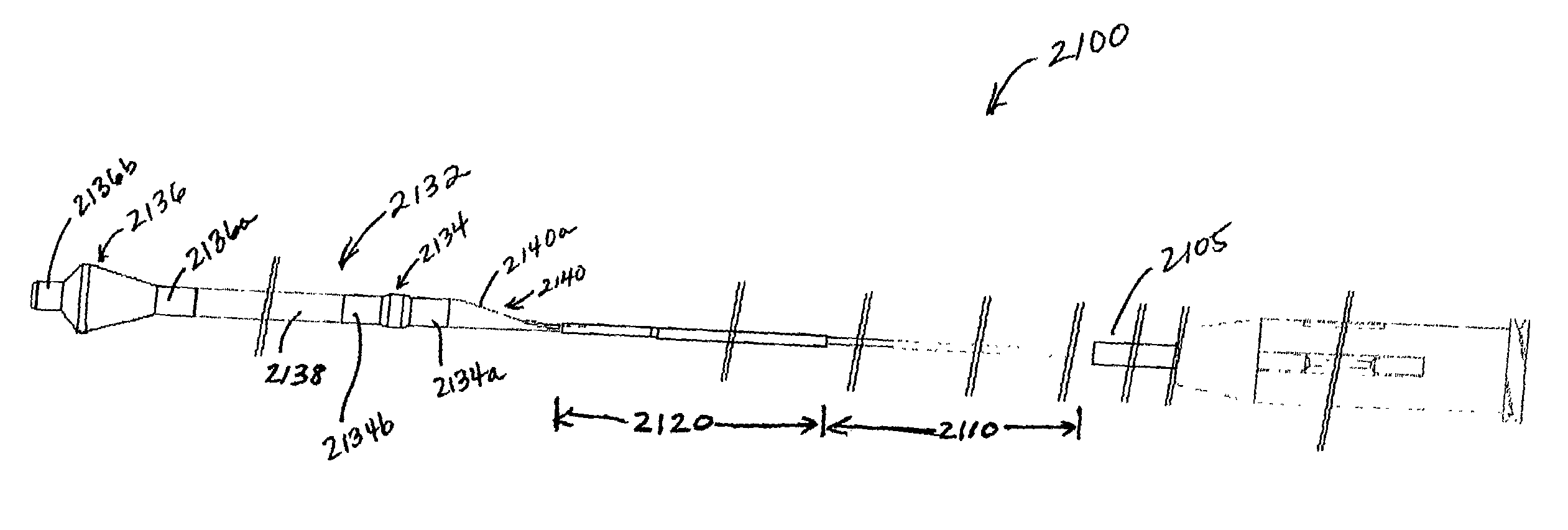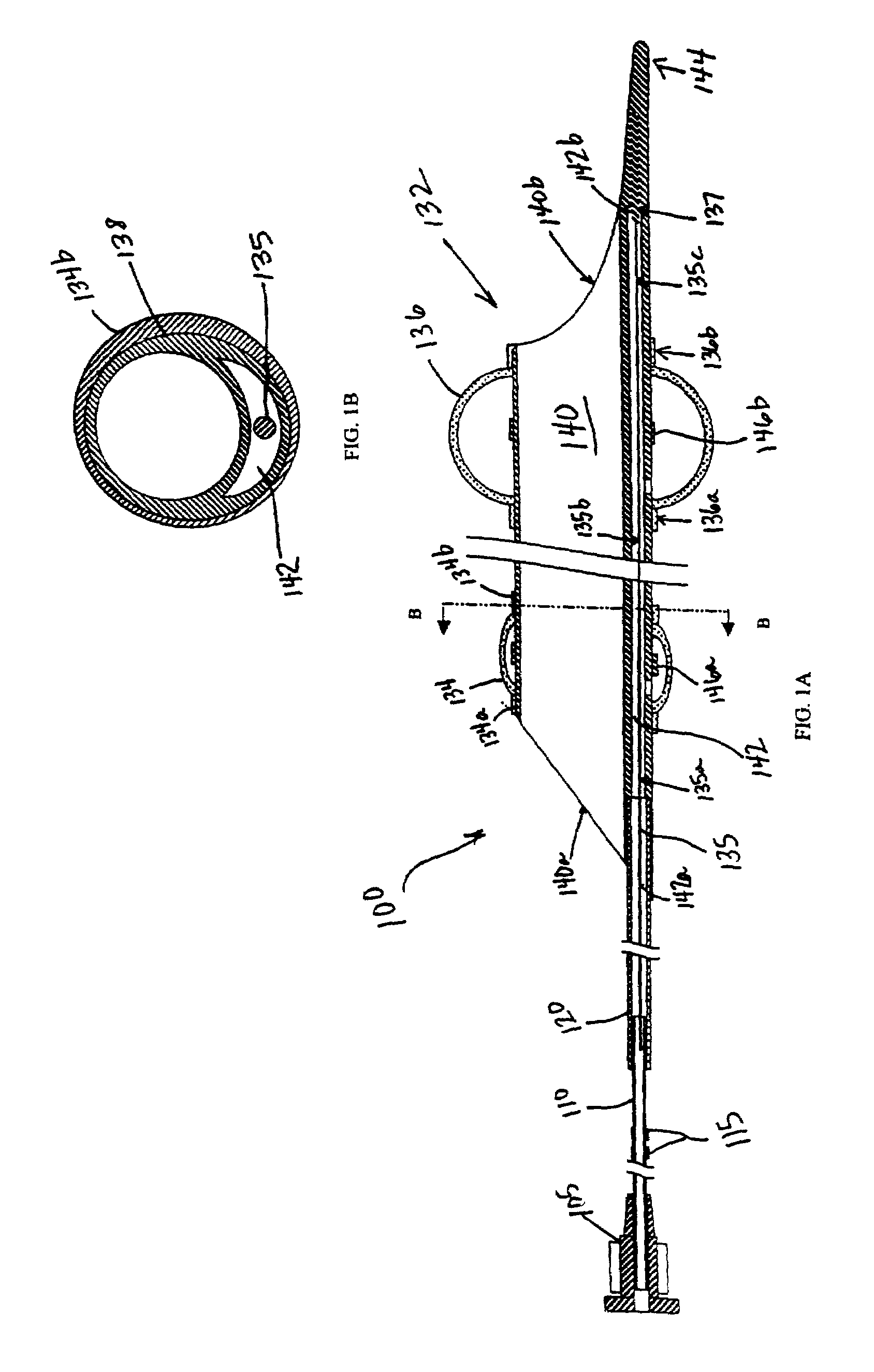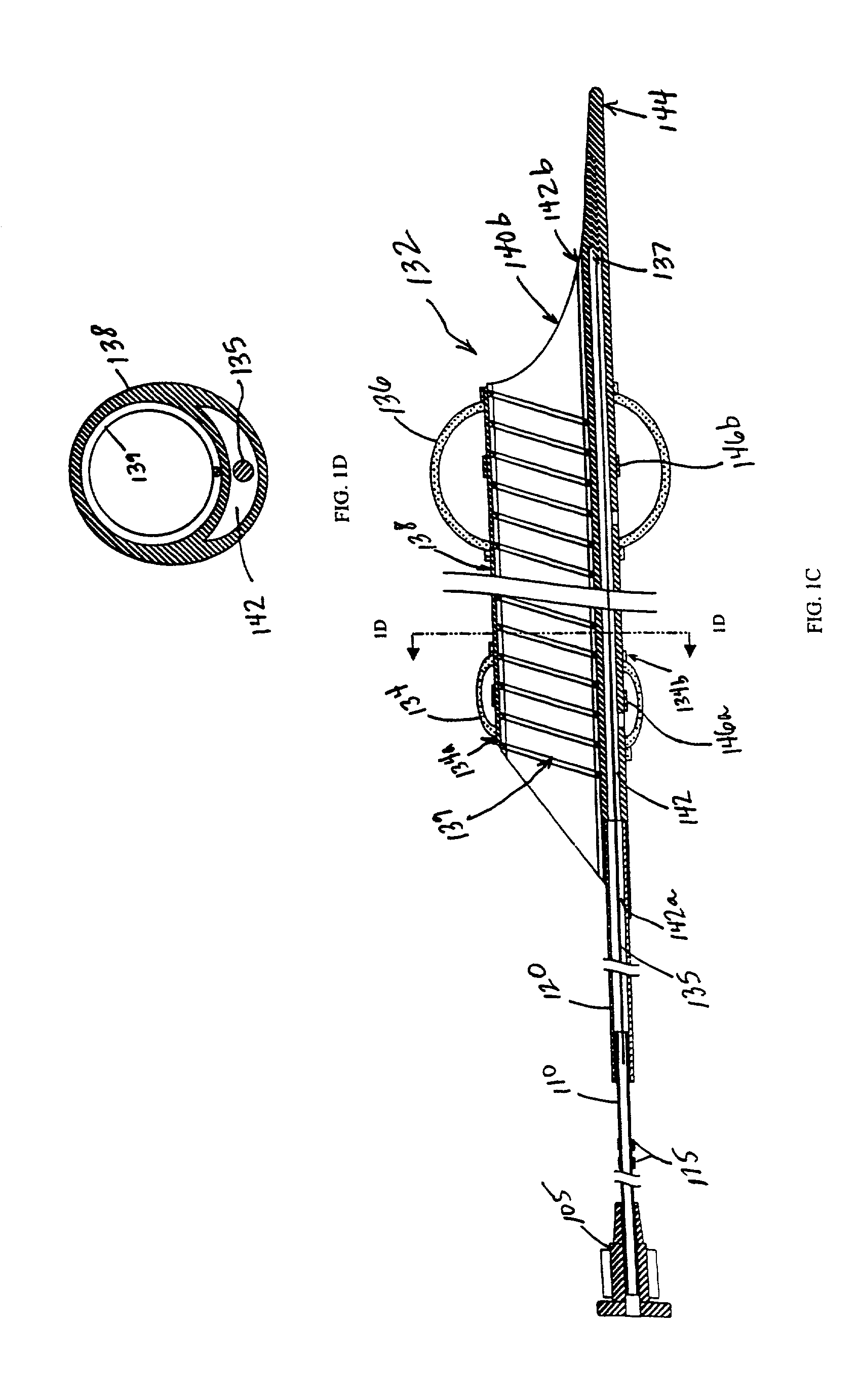Emboli protection devices and related methods of use
a protection device and shielding technology, applied in the field of shielding devices, can solve the problems of blockages, whether partial or full, that can have serious medical consequences, damage to the heart, and other vessels are also prone to narrowing, and achieve the effect of reducing or removing a blockage within a vessel
- Summary
- Abstract
- Description
- Claims
- Application Information
AI Technical Summary
Problems solved by technology
Method used
Image
Examples
Embodiment Construction
[0001]This application is related to U.S. application Ser. No. 09 / 940,986, filed Aug. 29, 2001, and U.S. application Ser. No. 09 / 845,162, filed May 1, 2001, both of which are incorporated herein by reference.
FIELD OF THE INVENTION
[0002]The present invention relates to apparatus and methods used to prevent the introduction of emboli into the bloodstream during and after surgery performed to reduce or remove blockage in blood vessels.
BACKGROUND OF THE INVENTION
[0003]Narrowing or occlusion of blood vessels, such as the walls of an artery, inhibit normal blood flow. Such blockages, whether partial or full, can have serious medical consequences, depending upon their location within a patient's vascular system. Narrowing or blockage of the coronary vessels that supply blood to the heart, a condition known as atherosclerosis, may cause damage to the heart. Heart attacks (myocardial infarction) may also result from this condition. Other vessels are also prone to narrowing, including carotid...
PUM
| Property | Measurement | Unit |
|---|---|---|
| angle | aaaaa | aaaaa |
| angle | aaaaa | aaaaa |
| angle | aaaaa | aaaaa |
Abstract
Description
Claims
Application Information
 Login to View More
Login to View More - R&D
- Intellectual Property
- Life Sciences
- Materials
- Tech Scout
- Unparalleled Data Quality
- Higher Quality Content
- 60% Fewer Hallucinations
Browse by: Latest US Patents, China's latest patents, Technical Efficacy Thesaurus, Application Domain, Technology Topic, Popular Technical Reports.
© 2025 PatSnap. All rights reserved.Legal|Privacy policy|Modern Slavery Act Transparency Statement|Sitemap|About US| Contact US: help@patsnap.com



